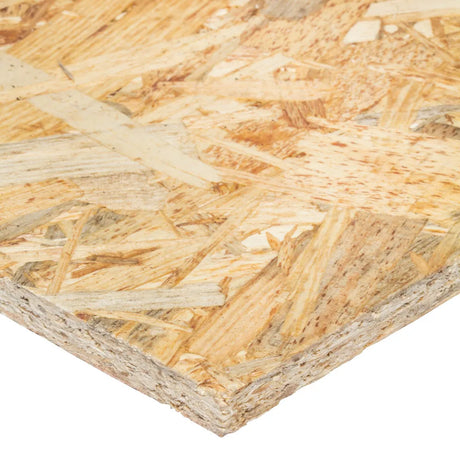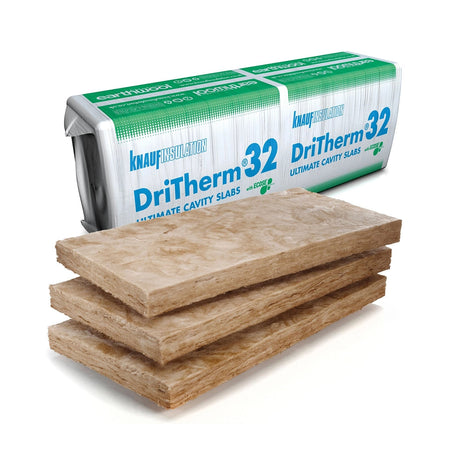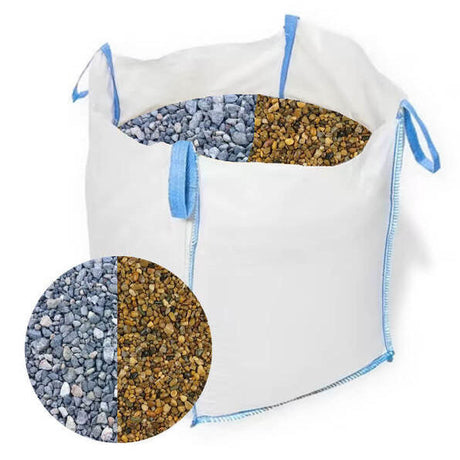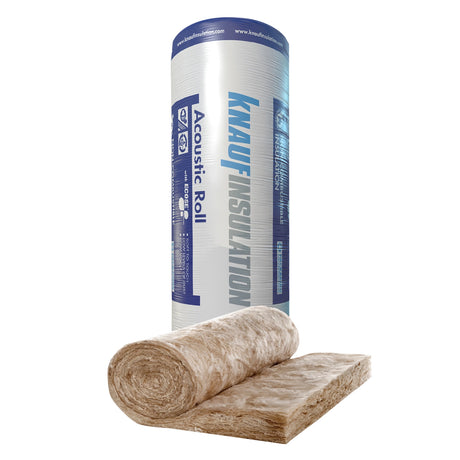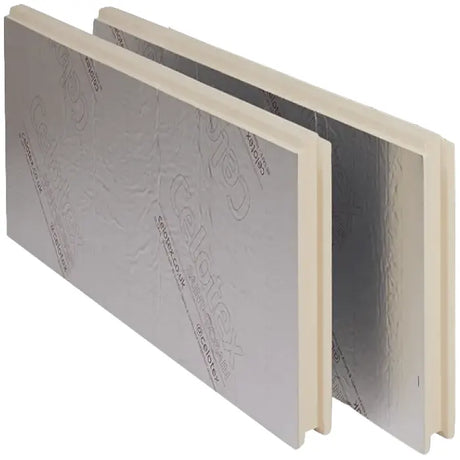Discover innovative ideas for shelving, furniture, wall panelling, and more using high-quality plywood sheets from Britain's leading DIY suppliers
When it comes to versatile building materials that combine affordability with exceptional performance, plywood stands as the unrivalled champion of the DIY world. This engineered timber solution has revolutionised home improvement projects across the UK, offering DIY enthusiasts and trade professionals alike a material that's both forgiving for beginners and sophisticated enough for advanced applications. From the simplest weekend craft project to ambitious room transformations, plywood delivers consistent results that professional builders have trusted for decades.
The beauty of plywood lies not just in its structural properties, but in its remarkable adaptability. Available in numerous grades, thicknesses, and finishes, this engineered timber can seamlessly transition from purely functional applications to stunning decorative features. Whether you're planning storage solutions for a compact London flat, crafting bespoke furniture for a countryside cottage, or creating modern wall features for a contemporary Manchester home, plywood offers the perfect foundation for your creative vision.
In this comprehensive guide, we'll explore the endless creative possibilities that plywood presents for home DIY projects. Drawing from our extensive experience at DIY Building Supplies, where we've helped thousands of customers across the UK realise their building dreams, we'll share professional insights and practical tips that ensure your projects achieve that coveted professional finish. From understanding the nuances of different plywood grades to mastering finishing techniques that rival commercial furniture, this guide will equip you with the knowledge to tackle any plywood project with confidence.
Why Plywood Remains the DIY Favourite Across Britain
The enduring popularity of plywood in British DIY culture stems from its unique combination of engineering excellence and practical benefits. Unlike solid timber, which can be unpredictable in its behaviour due to natural grain variations and potential defects, plywood offers consistent performance across every sheet. This reliability becomes particularly valuable when working on projects that demand precision and structural integrity, such as fitted furniture or load-bearing shelving systems.
The manufacturing process behind quality plywood creates a material that's significantly stronger than solid timber of equivalent thickness. By cross-laminating thin wood veneers, manufacturers create a composite material that resists warping, splitting, and shrinkage – common challenges that can frustrate DIY projects using traditional timber. This stability means your carefully crafted shelving unit won't develop unsightly gaps over time, and your handmade dining table will maintain its perfect finish for years to come.
Modern plywood manufacturing has also responded to the diverse needs of contemporary DIY projects. From moisture-resistant variants perfect for bathroom applications to furniture-grade options with stunning surface veneers, today's plywood selection caters to virtually every conceivable application. British suppliers like Elliott and Norbord have pioneered innovations in plywood technology, ensuring that UK DIY enthusiasts have access to materials that meet the highest international standards whilst addressing the specific challenges of our climate and building practices.
The cost-effectiveness of plywood makes it particularly attractive for budget-conscious projects without compromising on quality. A standard 18mm birch plywood sheet can form the foundation for furniture that rivals pieces costing hundreds of pounds in retail stores. This exceptional value proposition, combined with plywood's workability using standard DIY tools, has democratised high-quality woodworking, allowing anyone with basic skills to create impressive results.
Project Inspiration 1: Custom Shelving That Maximises Every Inch
Custom shelving represents one of the most rewarding applications for plywood, offering the perfect combination of functionality and aesthetic appeal. Whether you're creating floating shelves for a minimalist living room or designing comprehensive storage solutions for a busy family home, plywood provides the structural integrity and visual appeal necessary for professional results. The key to successful plywood shelving lies in understanding load requirements and selecting appropriate fixing methods that ensure long-term reliability.
For most residential shelving applications, 18mm hardwood plywood strikes the ideal balance between strength and workability. This thickness provides excellent rigidity for spans up to 800mm whilst remaining manageable for cutting and installation. When designing floating shelves, the concealed bracket system becomes crucial – modern heavy-duty brackets can support substantial loads whilst maintaining the clean lines that make floating shelves so appealing. Consider incorporating LED strip lighting within routed channels to create dramatic accent lighting that transforms functional storage into an architectural feature.
Built-in shelving systems offer even greater opportunities for creativity and space optimisation. By designing shelving that follows the contours of your room, you can maximise storage whilst creating a truly bespoke solution that perfectly suits your needs. The modular approach works particularly well with plywood, allowing you to create standardised components that can be combined in various configurations. This flexibility proves invaluable when requirements change or when moving to a new property, as individual modules can be reconfigured rather than rebuilt entirely.
Edge treatment becomes particularly important when creating visible shelving installations. Professional-quality edge banding, available in numerous wood species and colours, can transform raw plywood edges into surfaces that rival solid timber. For those preferring a more industrial aesthetic, leaving edges exposed whilst ensuring they're perfectly sanded and sealed can create striking contemporary features. The choice of finish – whether painted, stained, or clear-sealed – dramatically influences the final appearance and allows shelving to complement any interior design scheme.
Project Inspiration 2: Handcrafted Furniture with Professional Appeal
The world of DIY furniture making has been revolutionised by the availability of high-quality plywood sheets, enabling amateur woodworkers to create pieces that rival commercial furniture in both appearance and durability. The secret lies in understanding how to leverage plywood's inherent strengths whilst addressing its characteristics through thoughtful design and finishing techniques. Modern furniture-grade plywood, particularly birch varieties from Scandinavian suppliers, offers surfaces so refined they require minimal finishing to achieve stunning results.
Coffee tables represent an ideal entry point into plywood furniture making, combining relatively simple construction with impressive visual impact. The layered edge characteristic of quality plywood can become a distinctive design feature when properly finished, creating pieces that celebrate rather than disguise their material origins. By combining 18mm birch plywood tops with steel hairpin legs or solid timber frames, you can create contemporary pieces that perfectly suit modern interior design trends whilst keeping costs firmly under control.
Desk construction offers another excellent opportunity to showcase plywood's versatility. The material's dimensional stability makes it ideal for work surfaces that must remain perfectly flat over time, whilst its strength allows for creative cantilevered designs that would be challenging with solid timber. Consider incorporating cable management solutions during the design phase – routed channels for cables and discrete grommets for connections can elevate a basic desk into a sophisticated workspace solution that addresses modern technological requirements.
The key to achieving professional results lies in attention to detail during both construction and finishing. Pre-drilling all screw holes prevents the splitting that can mar an otherwise perfect project, whilst careful sanding progression from coarse to fine grits ensures surfaces that accept finishes beautifully. Modern wood finishing products, including water-based polyurethanes and hard-wearing oils, provide durability that matches commercial furniture whilst remaining accessible to DIY application methods.
Project Inspiration 3: Contemporary Wall Panelling for Modern Interiors
Wall panelling has experienced a remarkable renaissance in British interior design, moving far beyond traditional wainscoting to embrace contemporary geometric patterns and innovative textures. Plywood's uniform thickness and stability make it ideal for creating these modern wall treatments, whether you're planning subtle accent features or dramatic room transformations. The material's ability to be cut into precise shapes whilst maintaining clean edges allows for the creation of complex patterns that would be challenging with other materials.
Slatted wall panels have become particularly popular, offering a way to add texture and visual interest whilst maintaining the clean lines that characterise contemporary design. By ripping plywood sheets into uniform slats and mounting them with consistent spacing, you can create sophisticated accent walls that provide both visual interest and acoustic benefits. This technique works exceptionally well in home offices and media rooms, where sound control contributes to both comfort and functionality. The spacing between slats can be adjusted to accommodate LED strip lighting, creating dramatic backlighting effects that transform the wall into a focal point.
Geometric panelling offers another avenue for creative expression, allowing you to create custom patterns that reflect your personal style. Diamond patterns, herringbone arrangements, and linear compositions all work beautifully with plywood's clean edges and consistent thickness. The key to success lies in careful planning and precise cutting – creating templates from cardboard or MDF allows you to test patterns before committing to final cuts, ensuring perfect results that justify the investment in quality materials.
Full wall cladding represents the most ambitious panelling application, effectively transforming the character of entire rooms. This approach works particularly well in bedrooms and living areas where you want to create a warm, natural atmosphere. By selecting plywood with attractive surface veneers and applying appropriate finishes, you can achieve the luxury appearance of solid timber panelling at a fraction of the cost. Consider incorporating integrated shelving or display niches during the design phase to maximise both aesthetic impact and functional value.
Project Inspiration 4: Ingenious Storage Solutions for Every Home
Storage challenges plague homes across Britain, from compact city apartments to sprawling country houses. Plywood's versatility makes it the ideal material for creating bespoke storage solutions that maximise available space whilst maintaining aesthetic appeal. The material's strength-to-weight ratio allows for the creation of storage systems that can handle substantial loads without requiring heavy structural support, making it perfect for applications ranging from under-stair storage to modular wardrobe systems.
Under-stair storage represents one of the most valuable applications for creative plywood use, transforming often-wasted space into highly functional storage areas. The irregular angles and dimensions of under-stair spaces make off-the-shelf solutions impractical, but plywood's workability allows for precise custom fitting that maximises every available cubic inch. Consider incorporating pull-out drawers and adjustable shelving to ensure stored items remain easily accessible whilst maintaining organisation. The addition of soft-close drawer runners and quality handles elevates these practical solutions into features that contribute to your home's overall quality.
Modular storage systems offer exceptional flexibility for changing needs and requirements. By designing standardised components that can be combined in various configurations, you create storage solutions that can evolve with your lifestyle. This approach proves particularly valuable for children's rooms, where storage needs change dramatically as children grow. Cubes, rectangles, and specialised components can be mixed and matched to create configurations that suit current requirements whilst allowing for future reconfiguration.
Kitchen and bathroom applications demand moisture-resistant plywood variants that can withstand humid conditions without compromising structural integrity. Marine-grade plywood, originally developed for boat building, provides exceptional moisture resistance whilst maintaining the workability that makes plywood so popular for DIY applications. These storage solutions can incorporate sophisticated features such as soft-close doors, integrated lighting, and specialised storage accessories that rival commercial kitchen systems whilst being tailored precisely to your specific requirements.
Project Inspiration 5: Creative Crafts and Decorative Elements
The smaller-scale applications of plywood often provide the most satisfying DIY experiences, allowing for quick wins that deliver immediate visual impact. These projects serve as excellent introductions to working with plywood whilst providing opportunities to experiment with different techniques and finishes. The material's fine, consistent surface makes it ideal for detailed work that requires precision cutting and smooth finishing.
Wall art and decorative lettering represent particularly popular applications, offering ways to personalise your space with unique pieces that reflect your style and interests. Modern laser cutting services available across the UK can create intricate designs from your digital files, whilst traditional jigsaw and scroll saw techniques allow for hand-crafted approaches that carry personal meaning. The addition of backlighting through routed channels can transform simple cut-out designs into sophisticated illuminated features that serve as focal points in any room.
Functional decorative items offer the perfect combination of utility and aesthetic appeal. Planter boxes create opportunities to bring greenery indoors whilst showcasing woodworking skills, and their construction provides excellent practice in joinery techniques that apply to larger projects. Tablet stands, phone holders, and desk organisers represent quick projects that solve everyday problems whilst demonstrating plywood's versatility in smaller applications.
The key to success in decorative plywood projects lies in understanding how different surface treatments affect the final appearance. Natural finishes that celebrate the wood grain create pieces with timeless appeal, whilst painted finishes allow for bold colours and contemporary aesthetics. Stencilling and other decorative techniques can add personal touches that make each piece unique, whilst clear protective finishes ensure longevity without compromising appearance.
Selecting the Perfect Plywood for Your Project
Understanding the various plywood types available ensures you select the optimal material for each specific application, maximising both performance and value. The British market offers exceptional variety, from economical softwood options perfect for structural applications to premium hardwood variants that rival solid timber in appearance. This selection process becomes crucial for project success, as using inappropriate materials can lead to disappointing results regardless of construction quality.
Softwood plywood represents the most economical option and excels in applications where strength and stability matter more than surface appearance. These panels, typically constructed from pine or fir veneers, provide excellent structural properties whilst remaining budget-friendly. They work particularly well for shelving frameworks, storage interiors, and other applications where they'll be painted or covered. British suppliers like James Latham offer extensive ranges of softwood plywood in various thicknesses, ensuring availability for virtually any application.
Hardwood plywood, particularly birch variants from Scandinavian sources, offers stunning surface quality that requires minimal finishing to achieve professional results. The tight, consistent grain pattern characteristic of birch creates surfaces that work beautifully with both natural and painted finishes. These panels cost more than softwood alternatives but provide exceptional value when surface appearance matters. They're particularly suitable for furniture making, visible shelving, and decorative applications where the material quality directly impacts the final result.
Marine-grade plywood represents the premium option for applications involving moisture or demanding structural requirements. Originally developed for boat construction, these panels use waterproof adhesives and carefully selected veneers to provide exceptional durability in challenging conditions. Whilst more expensive than standard options, marine plywood proves invaluable for bathroom applications, kitchen installations, and outdoor projects where moisture resistance justifies the additional investment.
Structural plywood addresses applications requiring exceptional strength and load-bearing capacity. These panels meet specific engineering standards and provide certified performance characteristics that ensure compliance with building regulations. They're essential for applications such as flooring, structural shelving, and any situation where safety and regulatory compliance matter. Understanding load requirements and consulting appropriate structural tables ensures your projects meet both safety standards and performance expectations.
Professional Finishing Techniques for Outstanding Results
The difference between amateur and professional-looking results often lies in the finishing process rather than construction techniques. Plywood's consistent surface provides an excellent foundation for various finishes, but achieving truly professional results requires understanding proper preparation and application methods. The time invested in careful finishing pays dividends in both appearance and durability, transforming basic plywood projects into pieces that rival commercial furniture.
Surface preparation forms the foundation of any successful finish. Beginning with appropriate-grit sandpaper and progressing through finer grades ensures surfaces that accept finishes smoothly and uniformly. Pay particular attention to edges, which can appear fuzzy after cutting and require careful sanding to achieve smooth profiles. Any filling of gaps or defects should be completed during this phase, using high-quality wood fillers that sand smoothly and accept stains consistently with the surrounding wood.
Primer application becomes crucial when painting plywood, as the wood's absorbent nature can lead to uneven colour and poor adhesion without proper preparation. Quality wood primers seal the surface whilst providing an ideal foundation for subsequent coats. Water-based primers offer quick drying times and minimal odour, making them ideal for interior applications, whilst oil-based alternatives provide superior sealing properties for challenging applications.
The choice between paint, stain, and clear finishes dramatically affects the final appearance whilst influencing maintenance requirements. Modern water-based polyurethanes provide exceptional durability whilst maintaining clarity and allowing natural wood grain to show through. Painted finishes offer unlimited colour choices and can create striking contemporary pieces, whilst stained finishes enhance natural wood grain patterns whilst providing moderate colour adjustment. Consider the intended use environment when selecting finishes – high-traffic surfaces require more durable treatments than decorative pieces.
Tools and Techniques for Plywood Success
Working with plywood successfully requires understanding both appropriate tools and proper techniques that ensure clean cuts and precise joints. Unlike solid timber, plywood's layered construction presents unique challenges that require specific approaches to achieve professional results. The good news is that most plywood work can be accomplished with standard DIY tools, though understanding their proper use becomes crucial for consistent success.
Cutting plywood cleanly requires sharp blades and proper support to prevent tearout on the upper surface. Circular saws with fine-toothed blades (60+ teeth) provide excellent results when used with proper guides, whilst jigsaws offer flexibility for curved cuts when fitted with appropriate blades. The key technique involves scoring the cut line lightly before making the full cut, which helps prevent surface veneer from tearing. Supporting the sheet properly during cutting prevents binding and ensures straight cuts that require minimal finishing.
Joinery techniques for plywood often differ from those used with solid timber due to the material's layered construction. Traditional mortise and tenon joints prove less suitable than alternatives such as biscuit joints, pocket screws, and modern connector systems. These methods work with plywood's characteristics rather than against them, creating strong, reliable connections that maintain their integrity over time. Understanding appropriate screw types and sizes prevents splitting whilst ensuring adequate holding power.
Assembly techniques become particularly important when working with plywood's relatively thin sheets. Proper clamping ensures joints close completely whilst glue cures, but requires careful attention to prevent over-tightening that can cause indentations or damage. Using cauls (protective strips) distributes clamping pressure evenly whilst protecting surfaces from clamp marks. Quality wood glue designed for interior applications provides excellent bonding strength whilst allowing reasonable working time for complex assemblies.
Safety Considerations for DIY Plywood Projects
Safety must remain paramount when working with plywood, as the material's dust and the tools required for its processing present specific hazards that require proper precautions. Understanding and implementing appropriate safety measures protects both immediate health and long-term wellbeing whilst ensuring projects proceed smoothly without accidents or injuries.
Dust control represents the primary health concern when working with plywood, as the fine particles created during cutting and sanding can cause respiratory irritation and long-term health problems. Quality dust masks rated for fine particles provide essential protection, whilst proper workshop ventilation helps maintain air quality. Consider investing in dust collection systems for frequent woodworking, as they dramatically improve working conditions whilst extending tool life by preventing dust accumulation.
Tool safety becomes crucial when using power tools for plywood cutting and shaping. Maintaining sharp blades reduces the force required for cutting whilst improving cut quality and safety. Understanding proper techniques for each tool prevents accidents whilst ensuring consistent results. Never attempt to cut unsupported sheets, as binding can cause dangerous kickback that can result in serious injury.
Workshop organisation contributes significantly to safety by reducing trip hazards and ensuring tools remain in good condition. Proper storage for both tools and materials prevents damage whilst keeping work areas clear and safe. Good lighting ensures you can see cut lines and potential hazards clearly, whilst appropriate hearing protection preserves long-term hearing health when using power tools.
Cost-Effective Project Planning and Budgeting
Successful plywood projects require careful planning that balances ambition with available resources whilst ensuring quality results that justify the investment. Understanding material costs and availability helps develop realistic project budgets that avoid unpleasant surprises whilst maximising value from every purchase. The key lies in matching material grades to specific applications, avoiding over-specification whilst ensuring adequate quality for intended use.
Material estimation becomes crucial for budget control, as purchasing insufficient quantities can lead to costly delays and potential colour matching issues with different production batches. Planning cut lists carefully minimises waste whilst ensuring efficient use of standard sheet sizes. Consider how offcuts from larger projects can be utilised for smaller applications, maximising value from every sheet purchased.
Tool requirements vary dramatically between projects, and understanding these needs early in the planning process prevents costly tool purchases that see minimal use. Many tools can be hired for specific projects, providing access to professional-quality equipment without the investment required for purchase. This approach proves particularly valuable for occasional users who want professional results without maintaining extensive tool collections.
Planning project phases allows you to spread costs over time whilst ensuring each phase is completed to a high standard before moving forward. This approach reduces the risk of costly mistakes whilst allowing you to learn from early phases before tackling more complex elements. It also enables you to adjust plans based on experience gained during initial construction, often leading to improvements in later phases.
Maintenance and Longevity for Plywood Projects
Properly constructed and finished plywood projects can provide decades of reliable service with minimal maintenance, but understanding appropriate care procedures ensures maximum lifespan whilst preserving appearance. The key lies in matching maintenance approaches to the specific finishes and applications involved whilst addressing any issues promptly before they develop into major problems.
Regular cleaning using appropriate methods maintains both appearance and finish integrity. Water-based finishes generally tolerate mild soap solutions, whilst oil-based finishes may require specialised cleaners to maintain their properties. Avoid abrasive cleaners that can damage surfaces, and always test cleaning products in inconspicuous areas before general application.
Periodic refinishing extends project life dramatically whilst providing opportunities to update appearance as tastes change. Most finishes can be refreshed by light sanding and recoating rather than complete removal, making maintenance both economical and relatively simple. Understanding when refinishing becomes necessary prevents finish failure that can lead to more extensive repairs.
Environmental monitoring helps prevent problems before they develop, particularly in applications involving moisture exposure. Regular checks for signs of movement, finish deterioration, or moisture damage allow prompt attention that prevents minor issues from becoming major problems. Understanding your projects' specific vulnerabilities enables targeted monitoring that catches problems early whilst they remain easily correctable.
Inspiring Examples and Case Studies
Real-world examples demonstrate plywood's versatility whilst providing inspiration for your own projects. These case studies, drawn from our extensive experience at DIY Building Supplies, showcase the remarkable range of applications possible with thoughtful design and quality materials. From compact urban solutions to grand rural projects, plywood consistently delivers results that exceed expectations whilst remaining accessible to DIY enthusiasts.
A recent London flat renovation showcased plywood's space-maximising potential through an integrated storage system that transformed a compact bedroom into a highly functional space. By designing modular components that could be reconfigured as needs changed, the homeowner created a solution that adapted to different uses throughout the day. The use of birch plywood with natural finishes maintained visual lightness whilst providing robust storage that handled daily use without degradation.
A Cotswolds cottage kitchen renovation demonstrated how plywood could achieve period-appropriate aesthetics whilst incorporating modern functionality. By selecting appropriate profiles and finishes, the homeowner created fitted storage that complemented the property's historic character whilst providing contemporary convenience. The project's success lay in understanding how traditional proportions and details could be interpreted using modern materials and construction techniques.
An innovative home office solution in Manchester showcased plywood's potential for creating integrated technology solutions. By incorporating cable management, equipment storage, and ergonomic considerations into the design phase, the homeowner created a workspace that addressed modern requirements whilst maintaining clean aesthetics. The modular approach allowed for future reconfiguration as technology requirements evolved.
Conclusion: Unleashing Plywood's Creative Potential
The journey through plywood's creative possibilities reveals a material that consistently exceeds expectations whilst remaining accessible to DIY enthusiasts at every skill level. From simple weekend projects that solve everyday problems to ambitious room transformations that rival professional installations, plywood provides the foundation for countless creative expressions. The key to success lies not in expensive tools or advanced techniques, but in understanding the material's characteristics and working with them to achieve your vision.
As Britain's homes continue to evolve to meet changing lifestyles and requirements, plywood's adaptability ensures its continued relevance in DIY culture. The material's combination of strength, workability, and aesthetic potential creates opportunities for personalisation that off-the-shelf solutions simply cannot match. Whether you're solving storage challenges in a compact urban home or creating statement pieces for a country cottage, plywood provides the versatility to make your vision reality.
The projects and techniques explored in this guide represent just the beginning of what's possible with quality plywood and creative thinking. As your skills develop and confidence grows, you'll discover new applications and techniques that push the boundaries of what you thought possible. The investment in quality materials and proper techniques pays dividends not just in immediate results, but in the satisfaction that comes from creating something uniquely yours that perfectly suits your specific needs and aesthetic preferences.
Transform Your Ideas Into Reality with Premium Plywood Solutions
Ready to begin your next creative project? At DIY Building Supplies, we stock an extensive range of premium plywood sheets, from economical softwood options perfect for structural applications to stunning furniture-grade hardwood panels that require minimal finishing to achieve professional results. Our expert team understands the unique requirements of British DIY projects and can provide technical guidance to ensure your project succeeds from planning through completion.
Browse our comprehensive plywood collection online, where you'll find detailed specifications and competitive pricing on sheets from leading British and European manufacturers. We offer convenient delivery across the UK mainland, bringing quality materials directly to your project site. Contact our technical team for personalised advice on material selection, quantities, and techniques that ensure your creative vision becomes a stunning reality.
Visit DIYBuildingSupplies.co.uk today and discover why thousands of British DIY enthusiasts trust us for their plywood and timber requirements.



